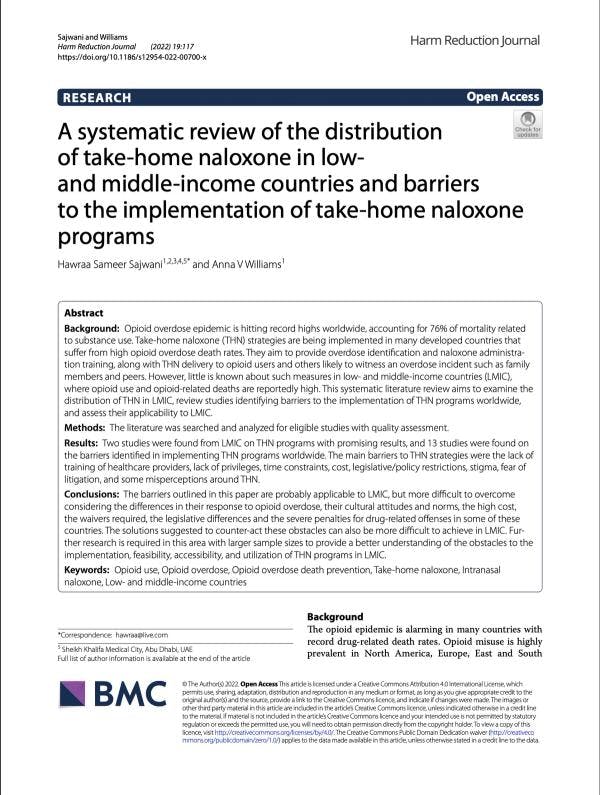A systematic review of the distribution of take-home naloxone in low- and middle-income countries and barriers to the implementation of take-home naloxone programs
Background: Opioid overdose epidemic is hitting record highs worldwide, accounting for 76% of mortality related to substance use. Take-home naloxone (THN) strategies are being implemented in many developed countries that suffer from high opioid overdose death rates. They aim to provide overdose identification and naloxone administra- tion training, along with THN delivery to opioid users and others likely to witness an overdose incident such as family members and peers. However, little is known about such measures in low- and middle-income countries (LMIC), where opioid use and opioid-related deaths are reportedly high. This systematic literature review aims to examine the distribution of THN in LMIC, review studies identifying barriers to the implementation of THN programs worldwide, and assess their applicability to LMIC.
Methods: The literature was searched and analyzed for eligible studies with quality assessment.
Results: Two studies were found from LMIC on THN programs with promising results, and 13 studies were found on the barriers identified in implementing THN programs worldwide. The main barriers to THN strategies were the lack of training of healthcare providers, lack of privileges, time constraints, cost, legislative/policy restrictions, stigma, fear of litigation, and some misperceptions around THN.
Conclusions: The barriers outlined in this paper are probably applicable to LMIC, but more difficult to overcome considering the differences in their response to opioid overdose, their cultural attitudes and norms, the high cost,
the waivers required, the legislative differences and the severe penalties for drug-related offenses in some of these countries. The solutions suggested to counter-act these obstacles can also be more difficult to achieve in LMIC. Fur- ther research is required in this area with larger sample sizes to provide a better understanding of the obstacles to the implementation, feasibility, accessibility, and utilization of THN programs in LMIC.
Downloads
Topics
Related Profiles
- Harm Reduction Journal
